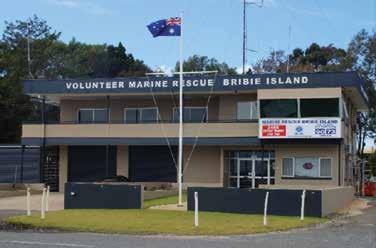
9 minute read
Calendar of Events
from Bribie Magazine 2022
by Tarn Radford
Bribie Respite and Support Services Incorporated has been servicing Bribie Island and surrounds since 1987.
We take enormous pride in supporting clients of age and disability in their local community and are determined to be the service of choice. As a not for profit organisation all monies generated are reinvested into our Bribie based business.
Advertisement
Early in 2021 we restructured our management team with the committee appointing David Hamon (left) as the new manager. David brings along a wealth of management experience and new ideas. We create jobs, supporting local business and local community groups. Our philosophy is supporting local clients in their local community with local carers. Locals supporting locals. The organisation is committed to providing a safe and supportive environment for all people who chose to participate in the supports and services we provide. We provide timely, high quality care and support in the lives of frail aged, those with dementia, young people with a disability and their representatives.
Our Aged and Dementia Care Services are also funded though the Commonwealth Home Support Program offering a Day Respite Program which include various activities throughout each week including Men’s and Ladies groups, music therapy, exercise physiology and art just to name a few. We offer: • Diversional recreational activities • Flexible Respite • In Home Social Support • Personal Care • Experienced Carers • Transport to and from our service • Meals
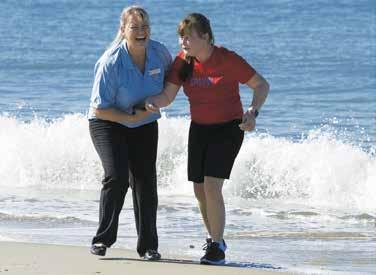
Disability Support - we have been a Registered NDIS provider since 2019 being able to offer a wide range of support services to assist individuals to participate in a variety of enjoyable activities within our community, establishing and maintaining a network of friends. Since its implementation in 2020, our 24-hour short term accommodation has proven popular amongst our clients where they are now asking us to provide supported independent living. We are extremely proud to be offering such services moving into 2022. We offer: • Centre based Day Program (5 Days per week) • Community Access • In Home Social Support • Personal Care • Overnight/Short Term Accommodation • Experienced Support Staff • School Holiday program • Transport to and from our service • Servicing Bribie Island and Surrounds For all enquiries regarding Bribie Respite and Support Services, please call 07 3048 2112 or visit our website www.bribierespite.com.au
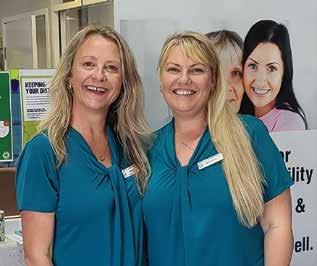

There are plenty of lovely places on Bribie Island and the nearby mainland, but our extensive salt marshes and mangroves would hardly make it onto a 'must-visit' list. Hard to get to, uncomfortable to walk through and pretty messy; there are reasons why our mangroves don’t get much promotion. But the truth is that so much of our local environment depends on the hard-working mangroves that line the shore on both sides of the Pumicestone Passage. Moreton Bay is an internationally recognised Ramsar site, which means that it is considered to contain large tracts of vital wetland, where migratory birds rest and breed during their 'summer holiday' from Siberia or Alaska.
Mangroves grow in the inter-tidal zone, up to the high tide mark, where a lot of silt comes down from creeks and rivers and is deposited along the shoreline. There are real challenges to living in this environment for plants, including big fluctuations in salinity and water temperature with tidal changes and big rain events, low oxygen levels in the soil - to name a few. In the Passage, there are several different mangrove species, and they all have their own way of surviving and thriving in salty water. One of our more common, and one of the most hardy, is the grey mangrove, which can grow to be quite tall. This is the mangrove that has all the roots that stick up out of the mud – really tough on your feet! Those are the pneumatophores, which help the tree to breathe. Late in summer, if you’re along the edge of the Passage, you’re likely to come across one of the grey mangrove seeds, floating on the water – looks like a little round, green book, often already starting to grow roots. Grey mangroves are important bulwarks against erosion, encourage oyster production, and provide protection for juvenile fish, as well as roosts for waterbirds. If you’re out in a boat, drifting north of the Avon wreck (be careful not to get stuck!), you’ll be able to see why Shag Island gets its name – flocks of cormorants roost among the mangroves there at night.
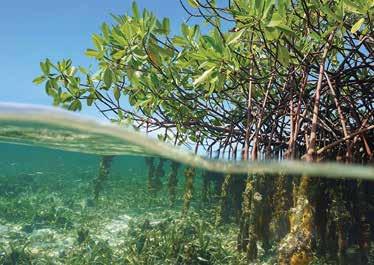
The red mangrove (above) is the one with the distinctive prop roots, which make it look like it’s walking out of a sci-fi movie. These roots help the red mangrove to breathe and stabilises it during tidal changes or floods.
The red mangrove provides a wonderful challenge to fishing enthusiasts. Mangrove jacks and other fish love to lurk amongst the prop roots when the tide is up – casting in the right spot to entice the jack out and bringing it in, before it can swim back to the shelter of the mangroves, can waste a whole afternoon (and several good lures)! Yellow mangroves like to grow closer to the top of the high tide, where there is less salt-water inundation and less wave-action. They don’t grow very high but have buttress roots at the base and lovely, limegreen leaves. You’ll have probably seen those long cigar-shaped things that float on the Passage; they are the seeds of the yellow mangrove – great for making a fence around the kids’ sand-castle. Aboriginal people traditionally made good use of mangroves. Grey mangrove wood is strong and light-weight timber, red mangrove is hardwood. The leaves of each different tree are useful for tanning, dyeing or for medicinal purposes. Environmentally, mangroves and marshlands are vital to the health of our waterways. Not only do they offer habitat and sanctuary for young fish and crabs, the roots and leaves provide nutrients that pass along the food chain.
Decaying plant matter is eaten by crabs, prawns, and molluscs, plankton and algae, all of which are in turn eaten by the fish that you and I like to catch in the Passage and beyond. Valuable nutrients from mangroves are carried out by the tides into Moreton Bay, to enrich inshore reefs and sea-grass beds, which in turn nourish dugongs, sea turtles and larger fish. The waterways are filtered by the mangroves, which help to absorb and decompose excess nutrient flow or chemical pollution from human land-use.
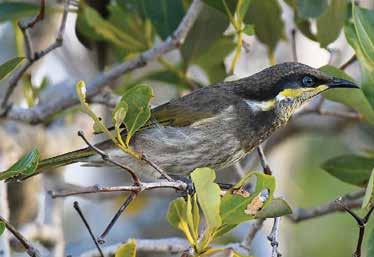
Some of our most beautiful birds, like various honeyeaters (above), enjoy the nectars of flowering mangroves and can be seen flitting about from tree to tree. The funny 'old-man' striated heron creeps around the mangrove roots, on the hunt for tiny crabs and fish. The mangroves are one place where the ibis really does belong – where it is a clean, white and elegant bird – and not at all like a 'bin chicken!' Local SE Qld fisheries are worth about $50 million annually, in total. This includes the trawling industry, the seasonal mullet, tailor and whiting catches, as well as recreational fishing. All these pursuits depend on the good work done by our mangroves and wetlands. 67% of Australia’s commercial catch are fish that are reliant on healthy mangroves. The era of climate change is when mangrove forests and saltwater marshes could at last be properly recognised for their great environmental importance. Mangroves can absorb huge amounts of CO2 from the atmosphere and store it in the roots; this was calculated in 2018 to be 6 billion tonnes annually. Up to four times more carbon can be stored per hectare of mangrove forest than even of tropical rainforest. Not only that but there is also evidence that mangroves are growing thicker, extending their range inland, as well as further south, in response to climate change; thereby further increasing its absorption of carbon. Strong Queensland and national legislation aims to protect mangroves from over-development along our coastal fringe, and there is even a World Wetlands Day (Feb 2nd). So, there are lots of good reasons to appreciate how essential our mangroves and wetlands are, for our environment, our lifestyle and our future. Robyn Tomkins, Bribie Island Boat Charters.
The unit arose from the Bribie Island Boating and Fishing Club, which in 1970 assumed the responsibility of assisting mariners in distress. It became Bribie Island Air Sea Rescue in 1982 and changed its name to Volunteer Marine Rescue Bribie Island Inc. in March 1997.
VMR Bribie Island Incorporated is a volunteer organisation, whose objectives are:
• Providing a rescue service, a rescue base and such equipment deemed necessary for the operation of the rescue service and the
Association generally
• Promoting, fostering and supporting boating safety amongst members and the boating public generally by arranging training and education programs Our area of operation covers some 500 square miles (including Pumicestone Passage) commencing 2 nautical miles south of the Caloundra Bar, 10 nautical miles east of Moreton Island and north of an east/west line from Tangalooma in Moreton Bay.
VMR vessels are on the water every weekend and public holidays between 7am and 5pm. All other times are covered by a callout roster 24/7.
The radio room operates all year round from 5am to 6pm monitoring VHF channels 16, 73, 67, and repeater channels 20, 21 & 81; and 27Mhz Channels 88 and 90.
The 24-hour emergency phone number is 07 3408 7596.
Our boat crews and radio operators are trained in accordance with relevant national standards, and boat crew are also required to hold first aid qualifications. Our trainers are also trained in vocational training and assessment! Bribie 1 VMRBI’s primary rescue vessel




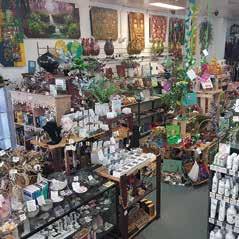
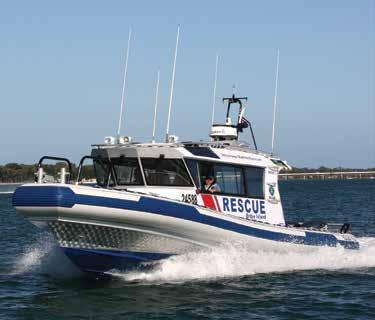
VMR Bribie Island is one of 26 squadrons affiliated with Volunteer Marine Rescue Queensland, which receives some operational funding from the Queensland Government, and operates under the umbrella of Queensland Fire and Emergency Services. We liaise regularly with the Water Police, particularly for Search and Rescue (SAR) activities which are generally controlled by the Search and Rescue Mission Co-ordinator (SARMC) who is a police officer. Major search and rescue activities may also be controlled by the Australian Maritime Safety Authority, based in Canberra. VMR Bribie Island also receives occasional government and community grants for specific purposes. However, this is never enough and ongoing fundraising efforts by our members are necessary to ensure our continued operational capability. Our members spend a lot of time selling raffle tickets and running fundraising functions to raise much needed funds!
VMRBI Fleet:
Bribie 1 – 11.5m NAIAD RHIB with 3x250hp Yamaha outboards. Bribie 2 – 7.2m, SWIFT RHIB with 2 x 200hp Yamaha outboards. Jonkers Bribie 3 – 5.5m SWIFT RHIB with 1 x 130hp Yamaha outboard.
Contact Details
4 Marine Parade, Bellara Qld 4507 Radio Room: Every Day 5:00 AM – 6:00 PM Phone: 07 3408 7596 Email: info@vmrbribie.com
Mailing Address:
The Secretary, PO Box 85, Bribie Island Qld 4507
